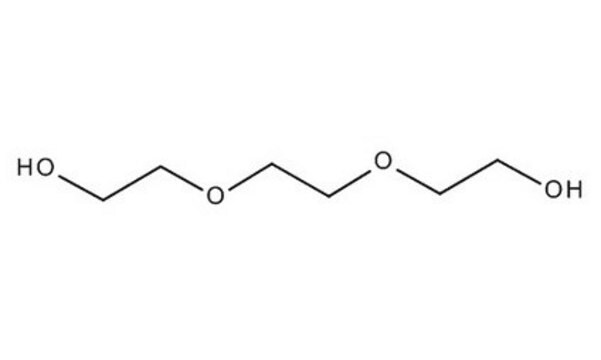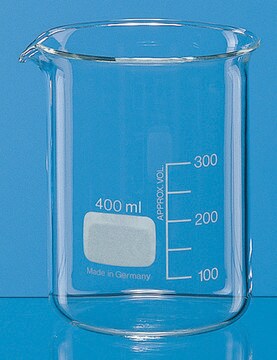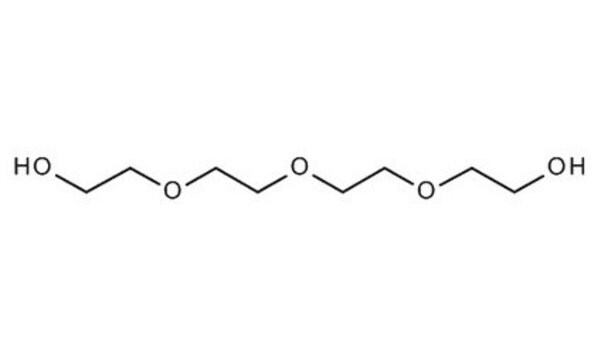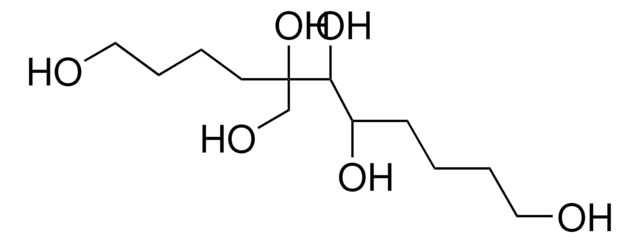T59455
Triethylene glycol
ReagentPlus®, 99%
Synonym(s):
Triglycol
About This Item
Recommended Products
vapor density
5.2 (vs air)
Quality Level
vapor pressure
<0.01 mmHg ( 20 °C)
product line
ReagentPlus®
Assay
99%
form
viscous liquid
autoignition temp.
699 °F
expl. lim.
9.2 %
refractive index
n20/D 1.455 (lit.)
pH
6.5-7.5 (20 °C, 100 g/L)
bp
125-127 °C/0.1 mmHg (lit.)
mp
−7 °C (lit.)
density
1.124 g/mL at 20 °C (lit.)
functional group
ether
hydroxyl
SMILES string
OCCOCCOCCO
InChI
1S/C6H14O4/c7-1-3-9-5-6-10-4-2-8/h7-8H,1-6H2
InChI key
ZIBGPFATKBEMQZ-UHFFFAOYSA-N
Looking for similar products? Visit Product Comparison Guide
Related Categories
Application
- To prepare fatty acid gelators, which are used to gelate various edible and vegetable oils.
- As a solvent to prepare superparamagnetic iron oxide nanoparticles for in situ protein purification.
- As an absorbent agent in the subsea natural gas dehydration process.
Legal Information
Storage Class Code
10 - Combustible liquids
WGK
WGK 1
Flash Point(F)
330.8 °F - closed cup
Flash Point(C)
166 °C - closed cup
Personal Protective Equipment
Choose from one of the most recent versions:
Already Own This Product?
Find documentation for the products that you have recently purchased in the Document Library.
Customers Also Viewed
Protocols
99%; Glycerol, ≥99.5%; Tetraethylene glycol, 99%
Our team of scientists has experience in all areas of research including Life Science, Material Science, Chemical Synthesis, Chromatography, Analytical and many others.
Contact Technical Service









